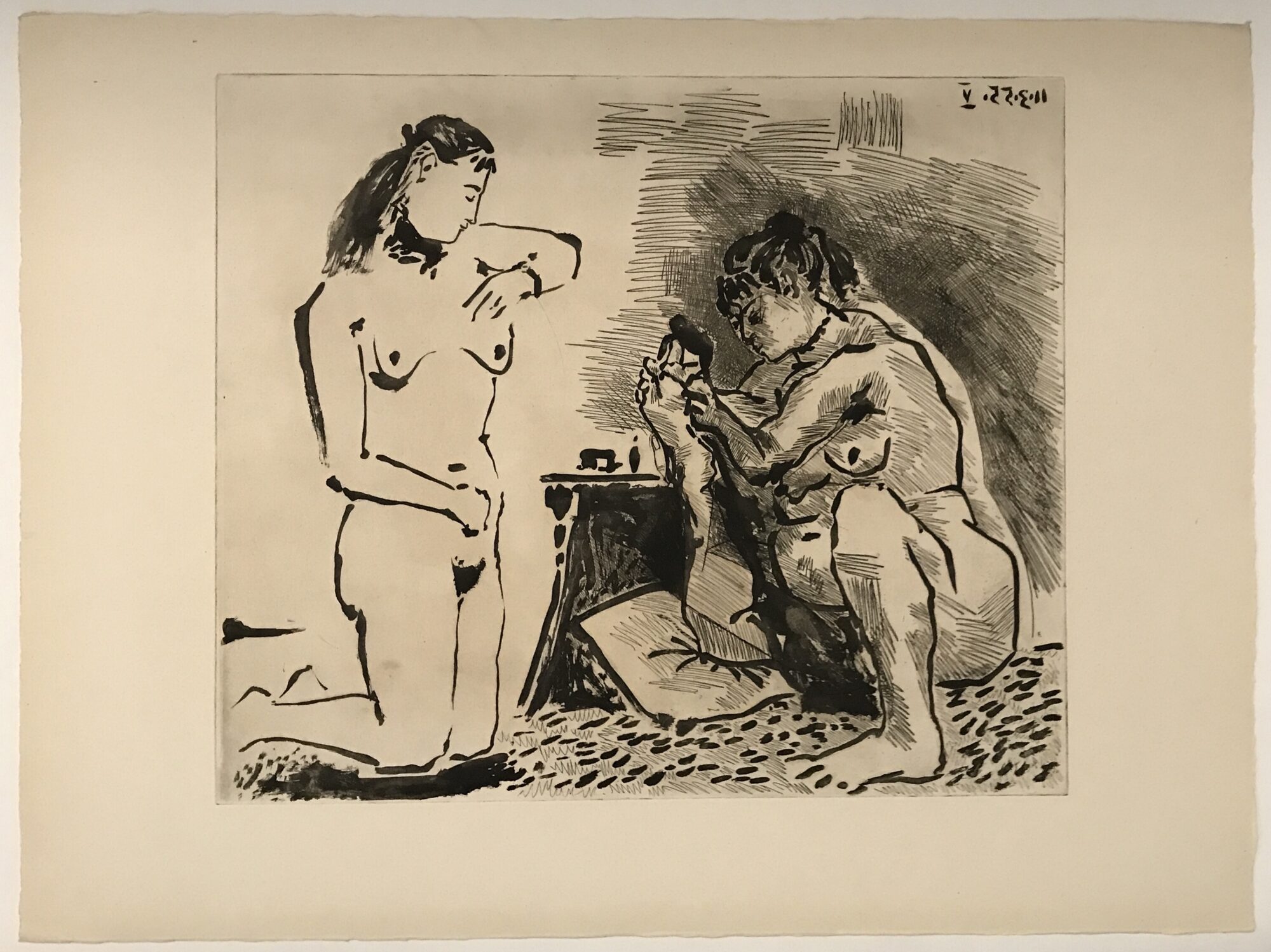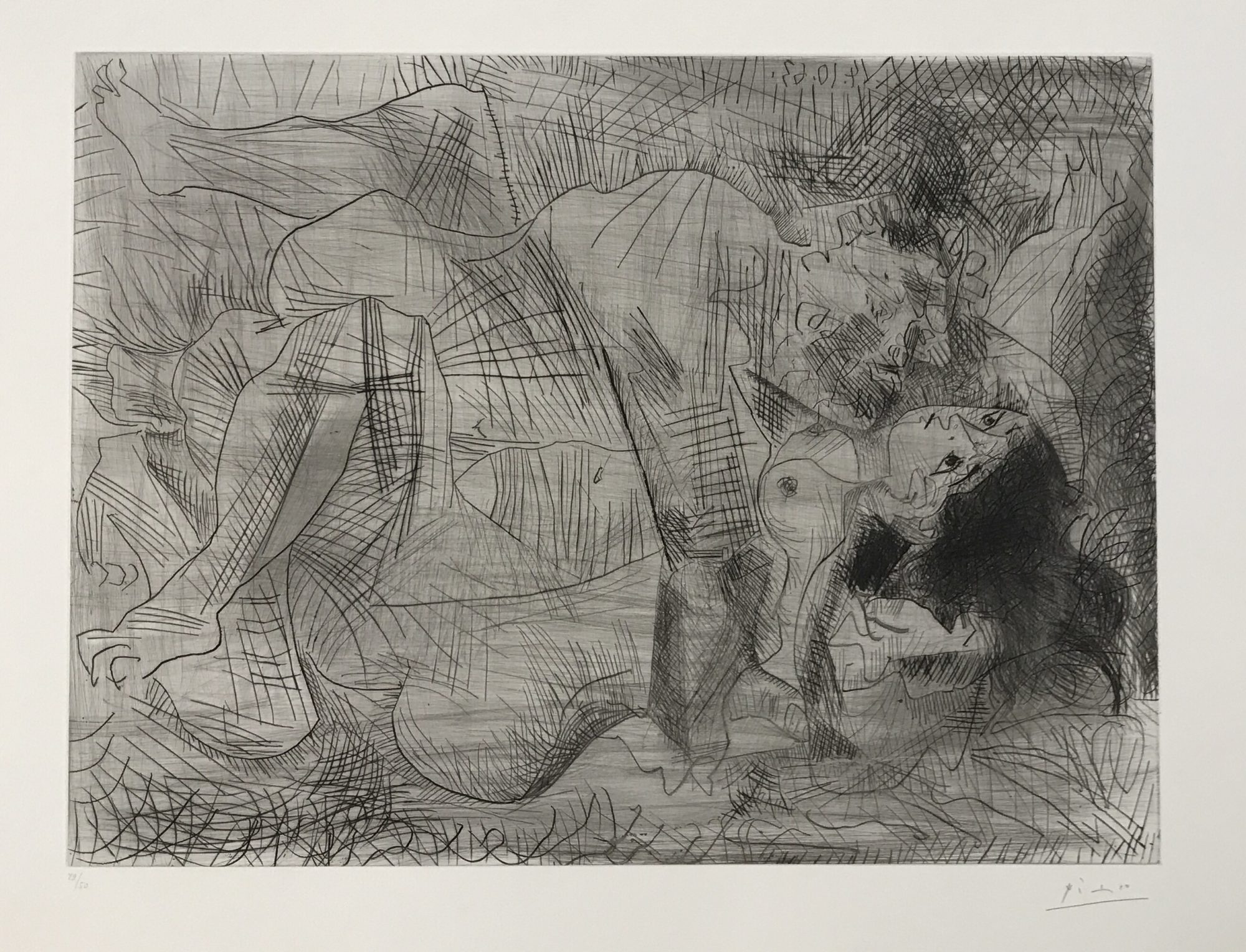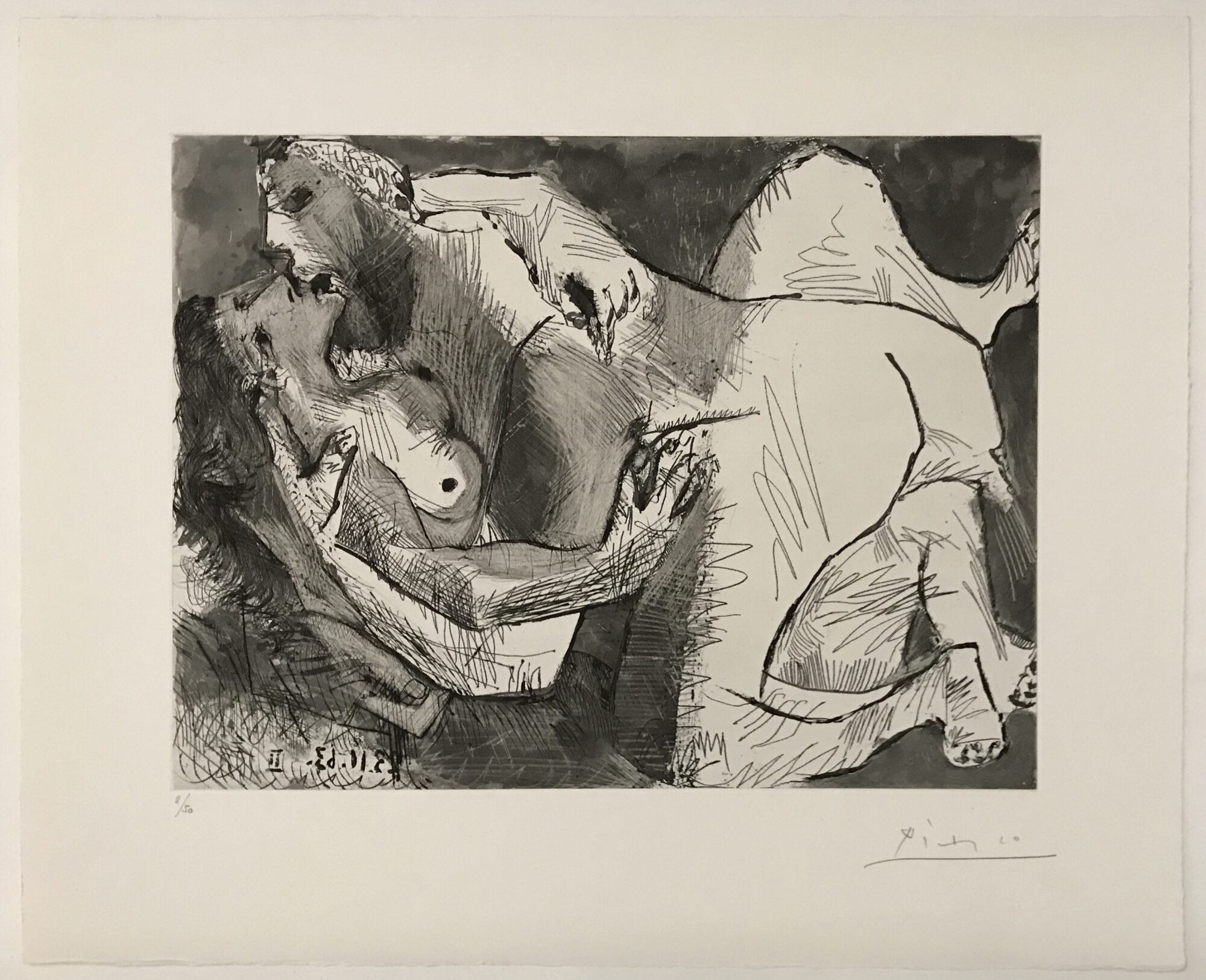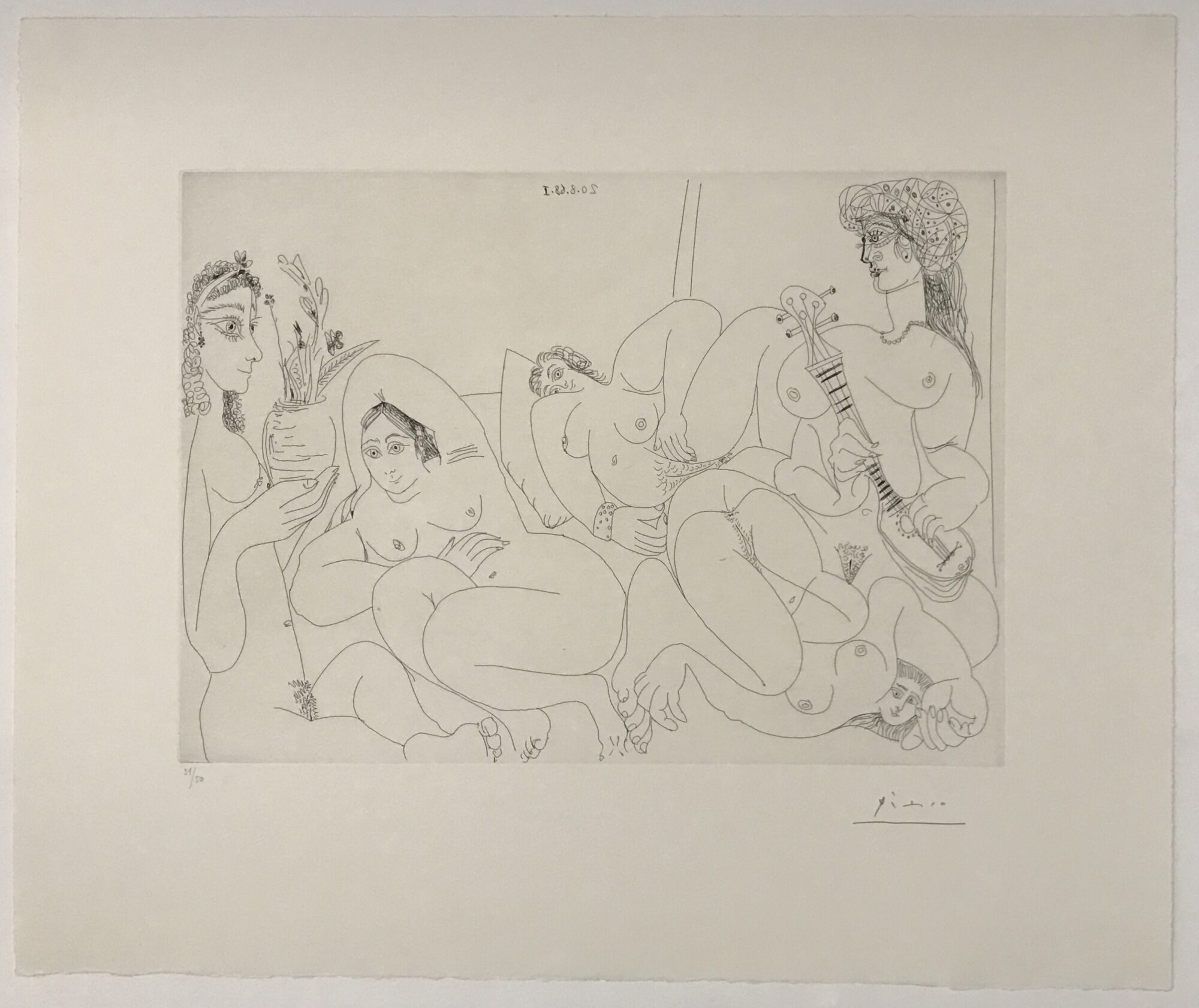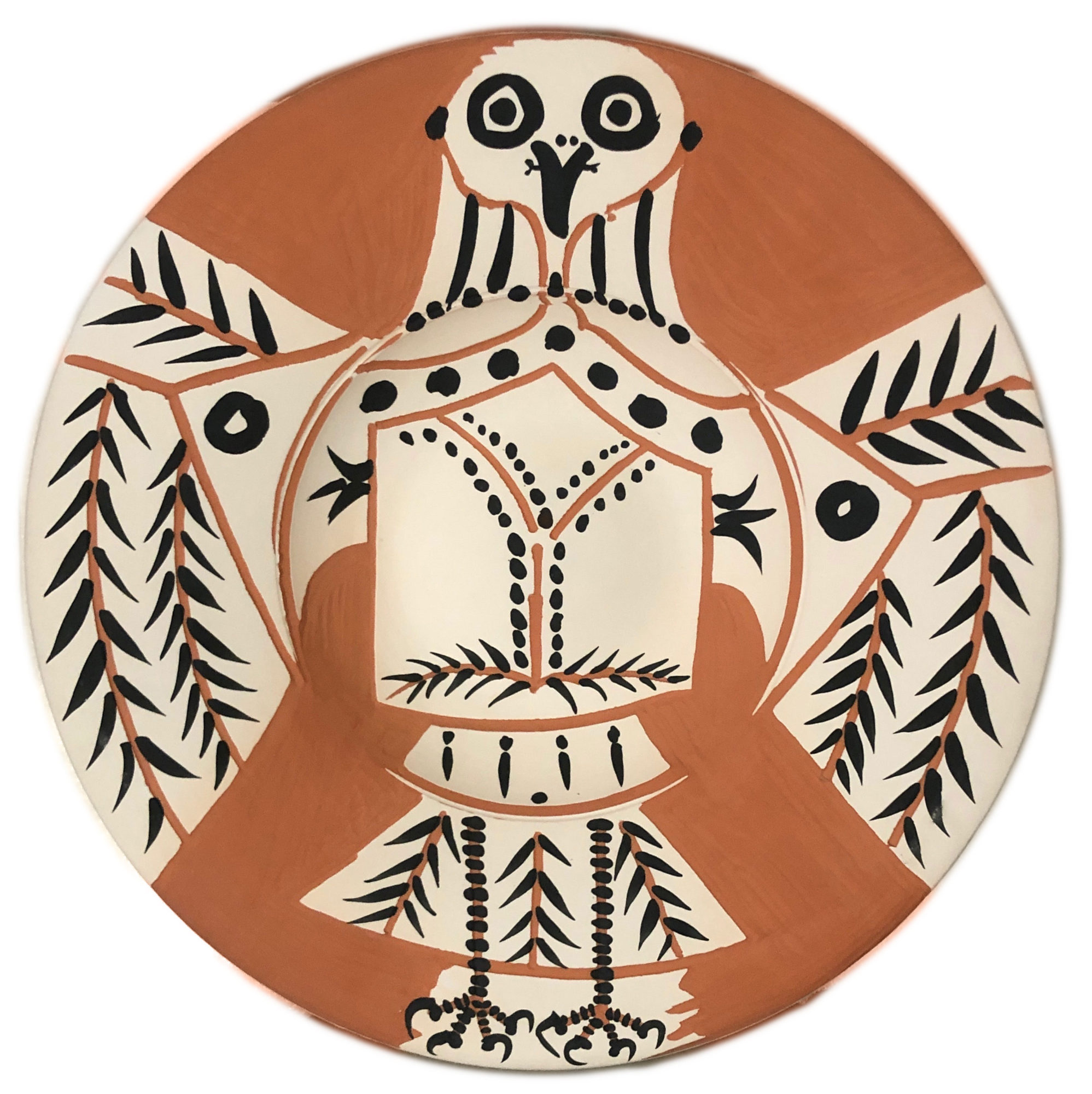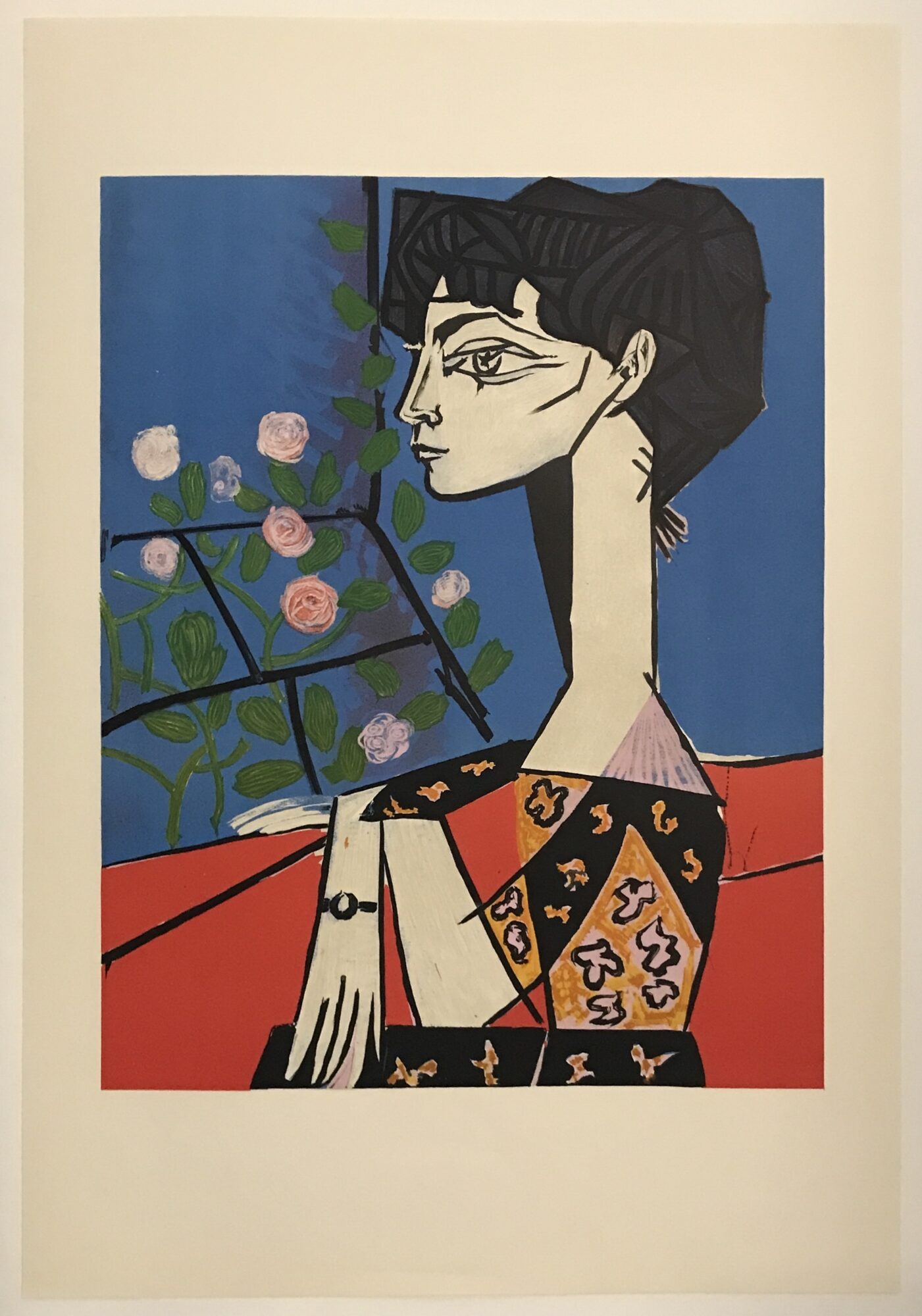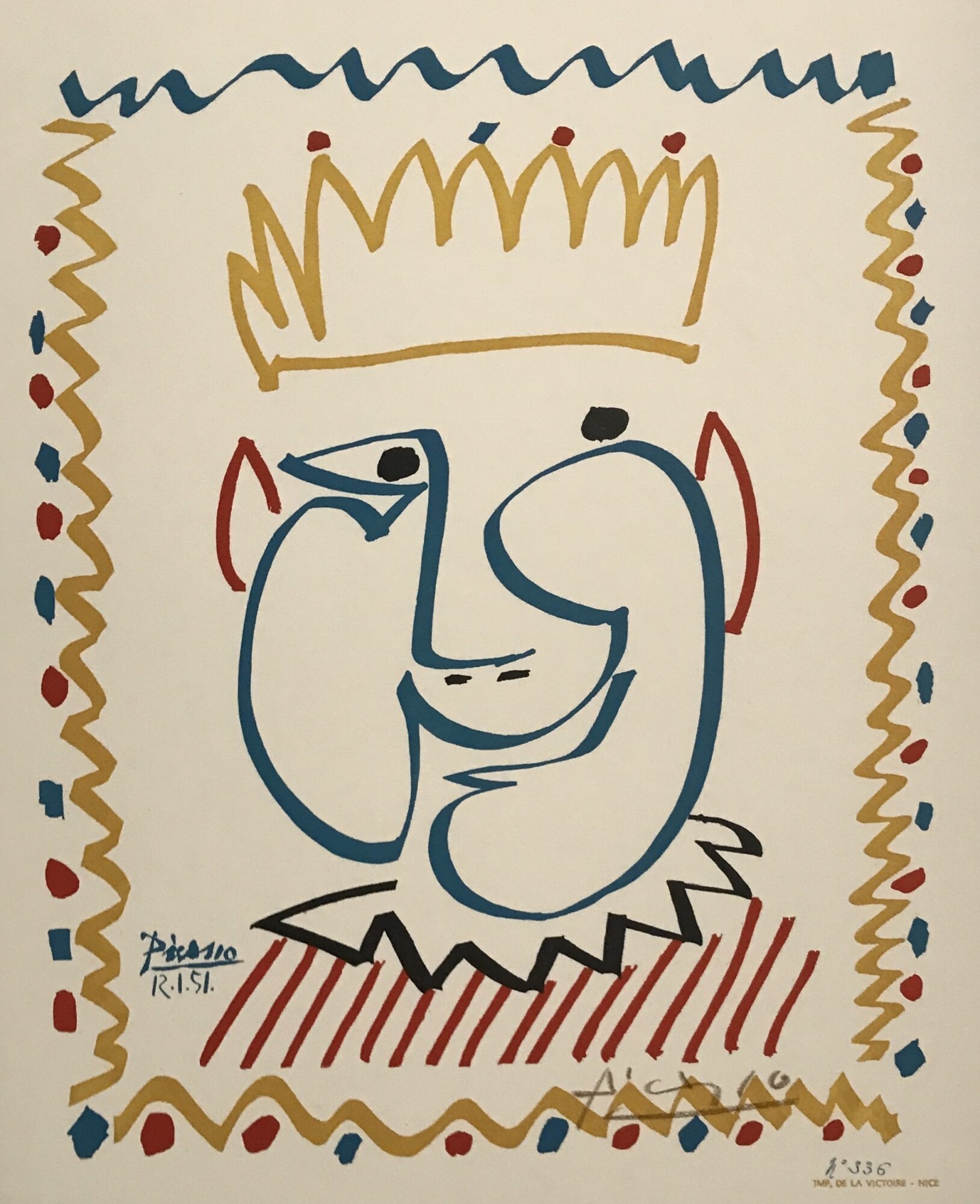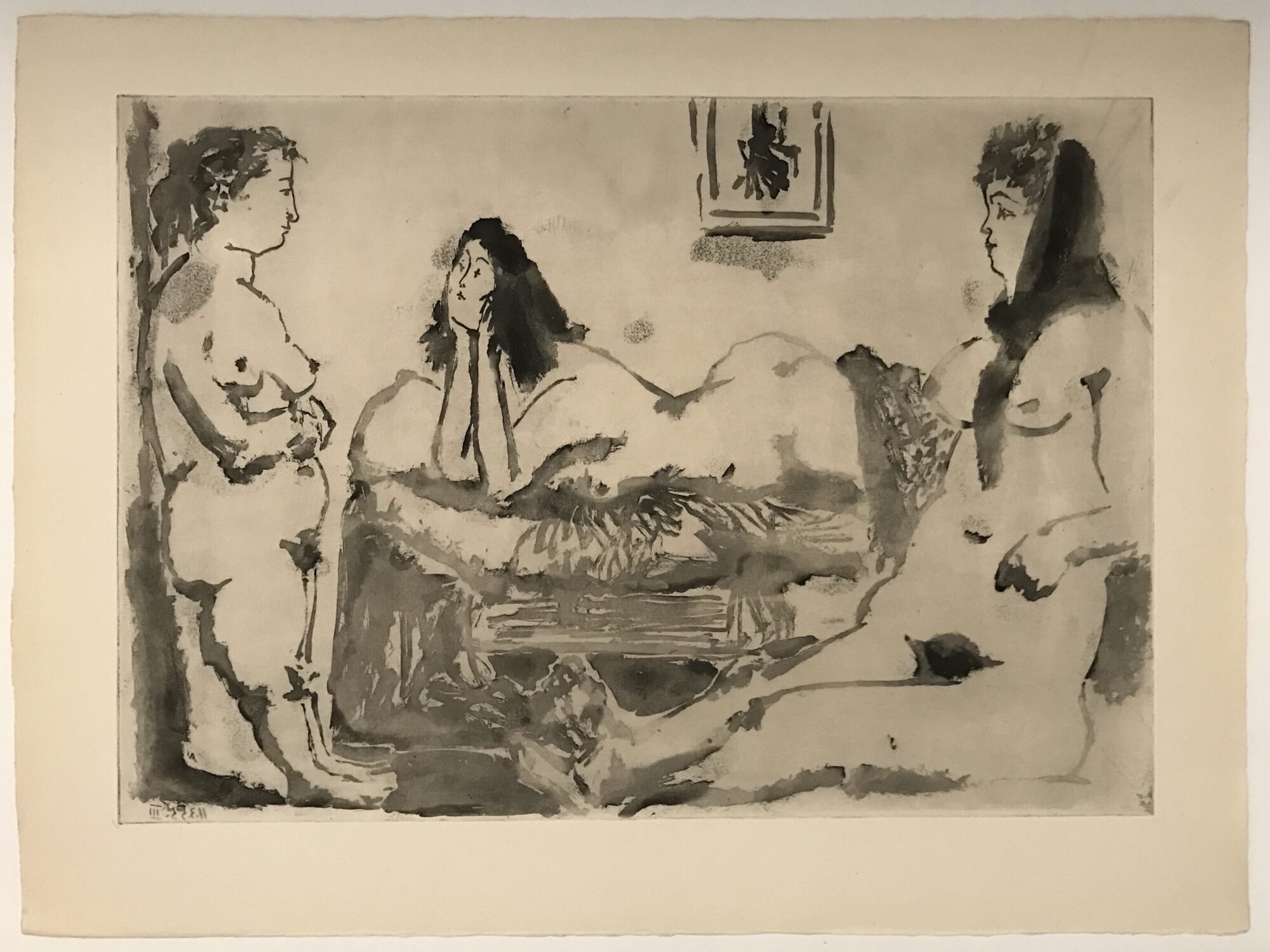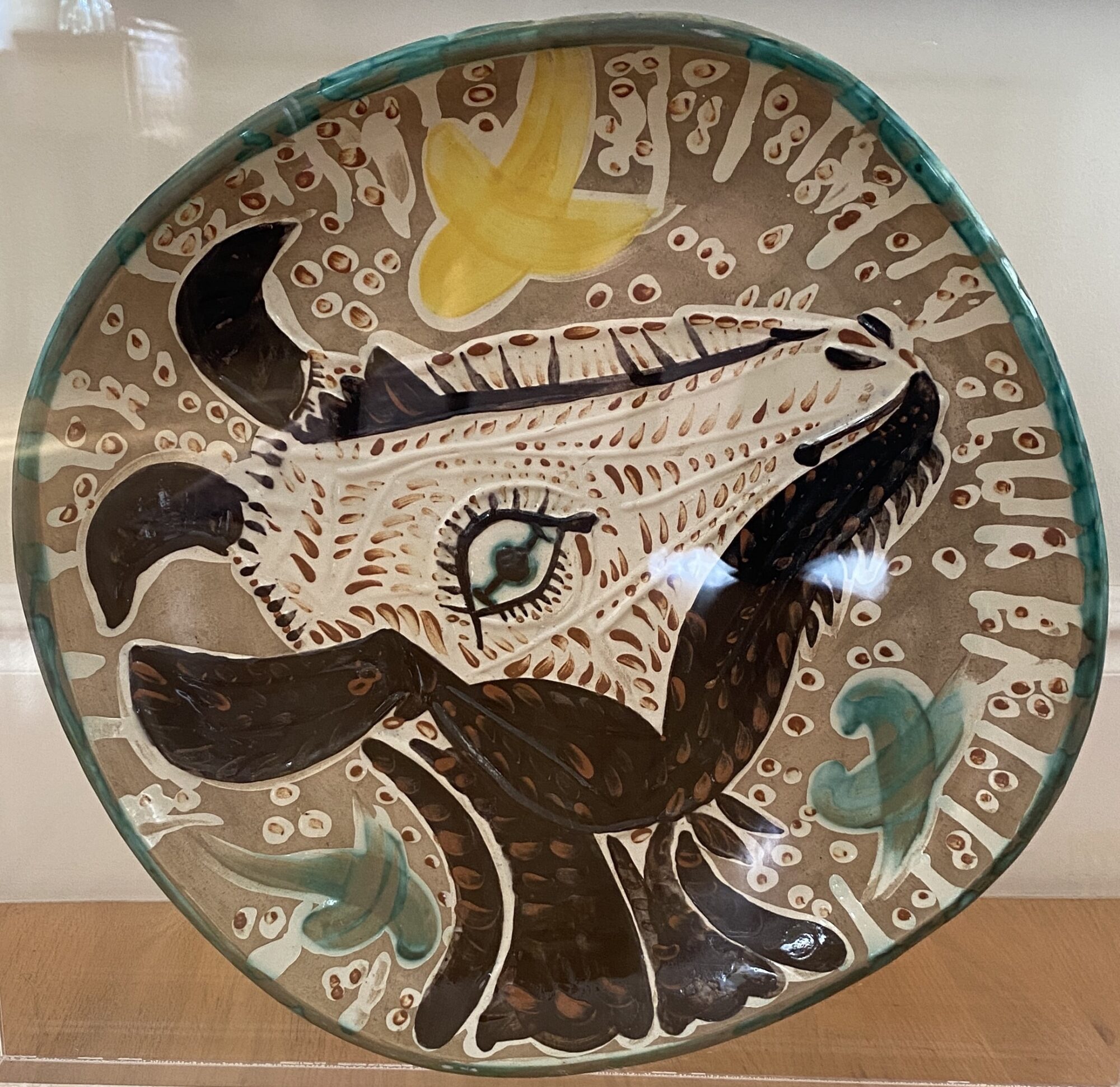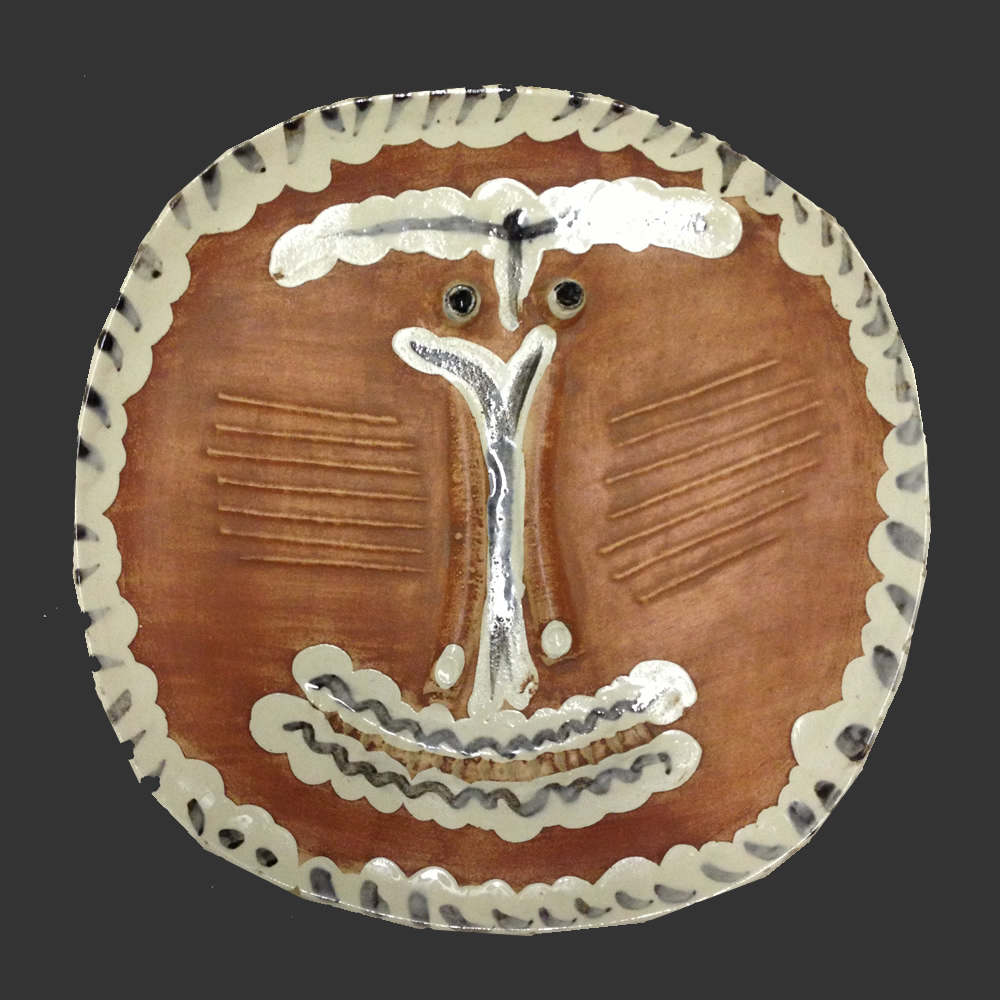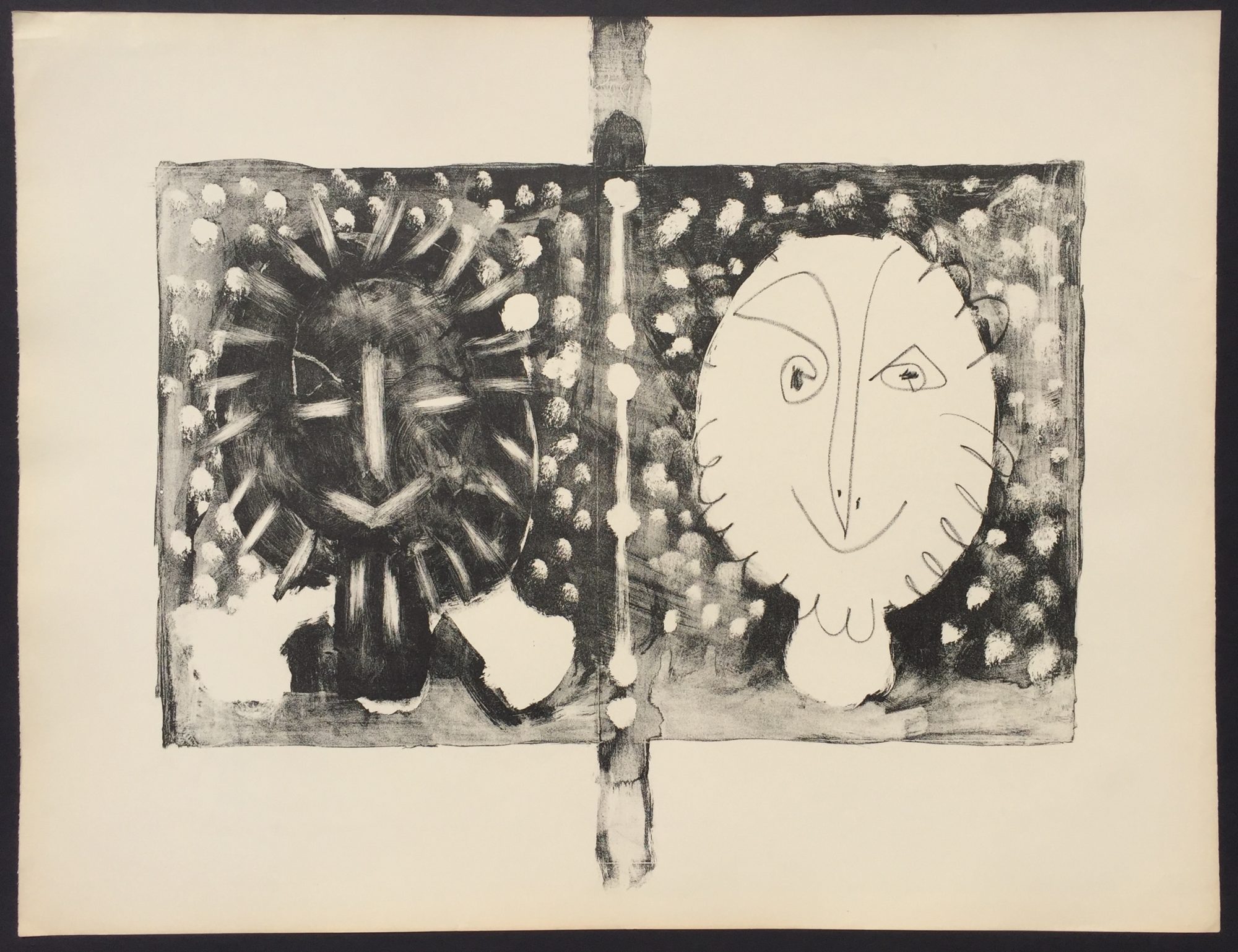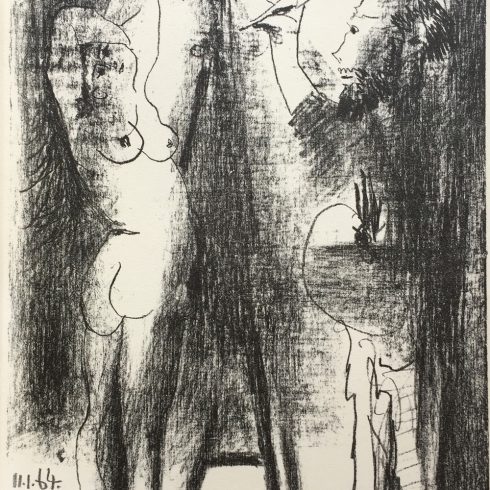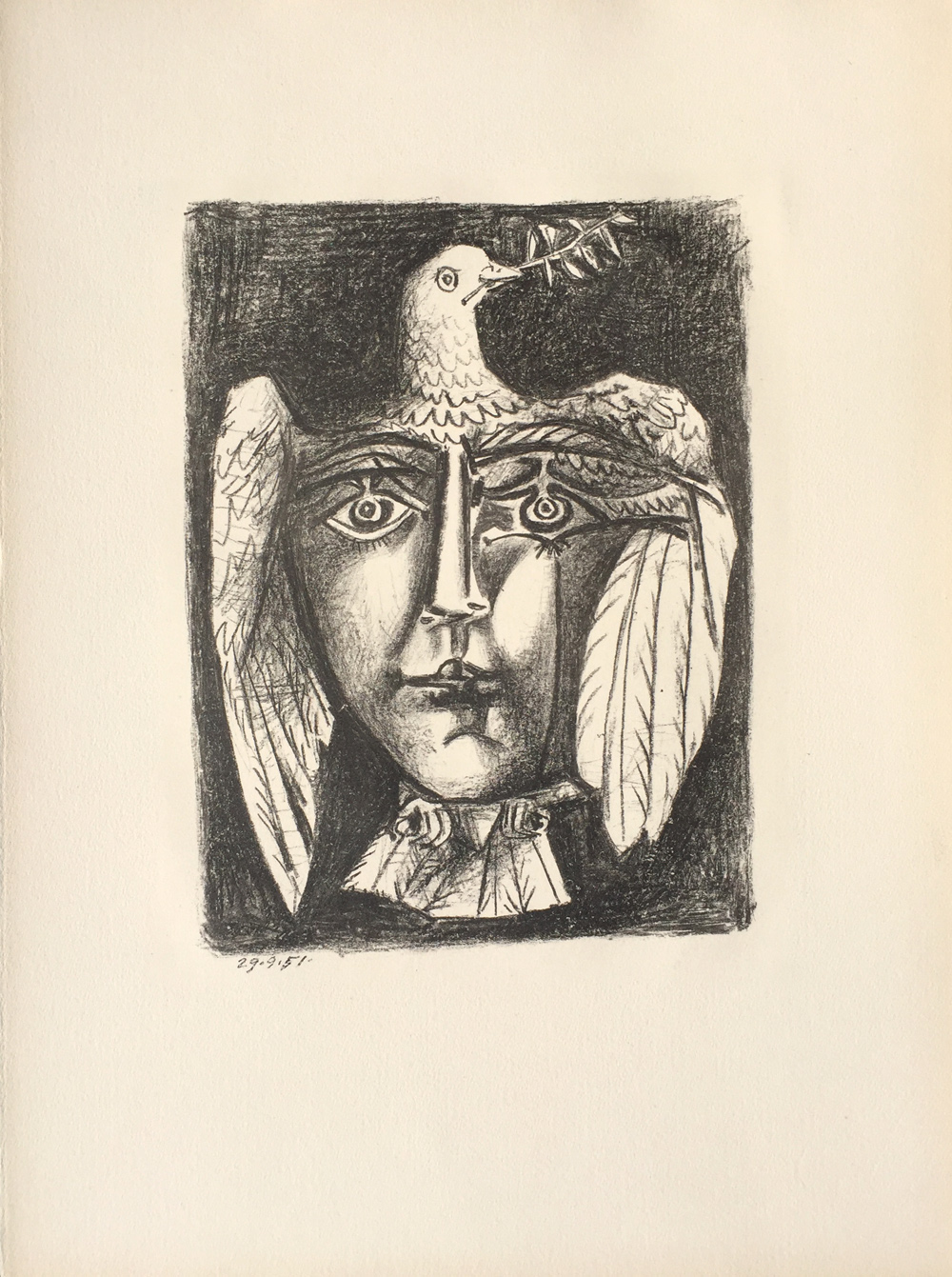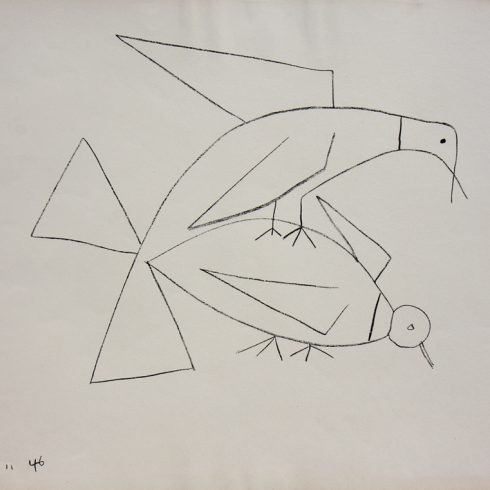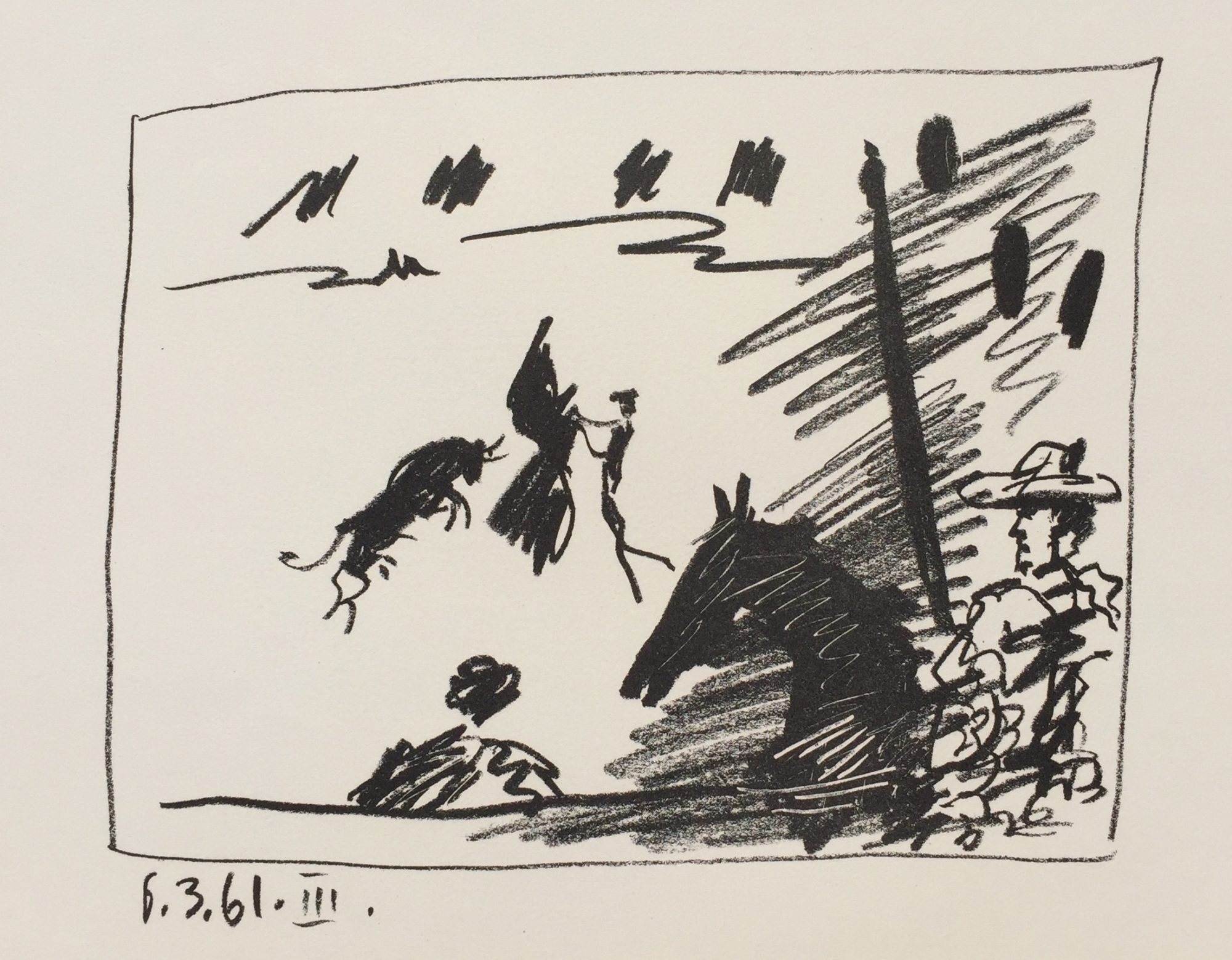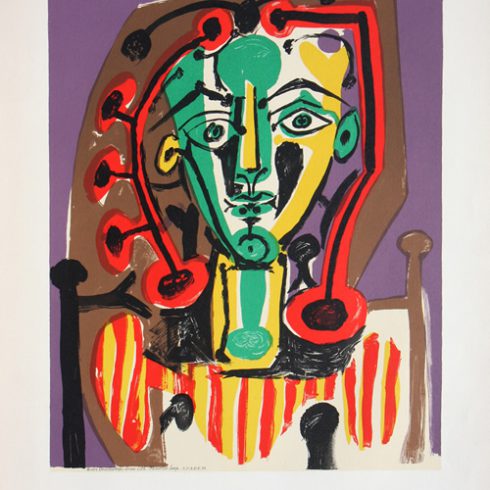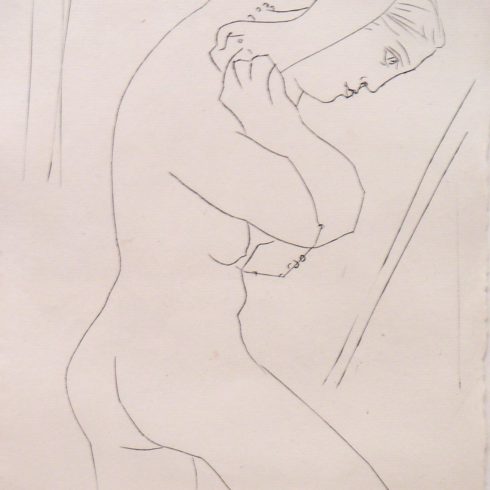Artist Pablo Picasso was born on October 25, 1881 the first son of Dona Maria y Picasso Lopez and Don Jose Ruiz Blasco. The Picasso Family legend reports that the infant Pablo Picasso was given up for dead at birth by the midwife, and was revived by his Uncle Don Salvador who blew cigar smoke into the infant’s face.
Picasso’s father was an artist and encouraged and instructed the young Picasso to draw and paint. Don Jose handed over his brushes and paints, vowing never to paint again, after watching thirteen-year-old Picasso masterfully complete the feet of some pigeons in 1894.
Pablo Picasso attended the Barcelona School of Fine Arts from 1896-97 and the Royal Academy in Madrid for a few months in 1897. In 1900, Pablo Picasso visited Paris for the first time. Enthralled by Paris, Picasso spent the next four years alternating between Barcelona and the City of Light.
In 1904 Pablo Picasso moved to Paris, where Picasso became a member of a circle of avant-garde artists and writers while living in “Le Bateau Lavoir”. This period coincides with the Picasso’s infamous “Blue Period”. During this “Blue Period,” Picasso took his subjects from the poor and social outcasts, with a sentimentalized melancholy mood expressed through cold ethereal blue tones. Pablo Picasso did a number of powerful etchings in a similar vein, including ‘Le Repas Frugal’ (The Frugal Meal) in 1904. Picasso’s Rose Period would follow where the Picasso’s palette softened with pinks, light reds and pale grays featuring circus players saltimbanques), street performers, dancers and the harlequin.
Influenced by African sculpture and the simplified forms of painter Paul Cezanne, Pablo Picasso began experimenting with artist Georges Braque, in using a multiplicity of viewpoints so that many different aspects of an object were present simultaneously in the same image. The result was the birth of Cubism. Picasso’s first full-fledged Cubist painting Les Demoiselles d’Avignon was created in 1907. The work, was initially shunned by Picasso’s colleagues and remained in his studio until the Museum of Modern Art, New York purchased it in 1937 for $24,000.
Pablo Picasso was married only twice, to Olga and then Jacqueline, and had four children by three women. Women played significant roles in Picasso’s personal and creative life. Picasso’s most influential companions were: Fernande Olivier (together 1904-1911), Eva Gouel (together 1911-1915), Olga Khokhlova (together 1917-1927; son Paulo born 1921), Marie Therese Walter (together 1927-1936; daughter Maya born 1935), Dora Maar (together 1936-1944), Francoise Gilot (together 1943-1953; son Claude born 1947; daughter Paloma born 1949) and Jacqueline Roche (together 1953-1973).
When Pablo Picasso spied seventeen-year-old Marie-Therese outside Galerie Lafayette, Picasso approached her and boldly said “Mademoiselle, you’ve got an interesting face. I’d like to paint your portrait. I am Pablo Picasso.” Marie-Therese’s classical features, youth and purity inspired Picaso, and Marie-Therese was the central figure and muse of Picasso’s acclaimed 1930-1937 series of 100 etchings for The Vollard Suite, named after prominent art dealer Ambroise Vollard. Somewhat autobiographical, the Vollard Suite encompasses numerous etchings that depict Picasso’s affair with Marie-Therese in his art studio.
In November 1945 Pablo Picasso set up shop at the Atelier Mourlot, a well-known lithography studio in Paris. The Picasso Mourlot creative partnership would result in ground-breaking lithographic techniques, never before utilized, and in the Mourlot studio Pablo Picasso produced some of the finest graphic prints ever created, including: lithographs, etchings, engravings, linocuts, and woodcuts.
Pablo Picasso died on April 8, 1973 in the South of France at the age of 91. During the last five years of his life, Picasso was extremely productive, creating the famed 347 Suite — a group of 347 etchings Pablo Picasso created from March to October of 1968. This monumental printmaking feat was followed by a series of 156 etchings, aptly named the 156 Suite, which were published posthumously. These final etching by Pablo Picasso were a last window into one of history’s greatest artistic innovators and talents.
“When you begin a picture, you often make some pretty discoveries. You must be on guard against these. Destroy it, do it over several times. With each destruction of a beautiful discovery, the artist does not really suppress it, but rather transforms it, condenses it, makes its more substantial. What comes out in the end is the result of discarded finds. Otherwise you become your own connoisseur. After all, I don’t buy my own pictures.” – Pablo Picasso
Select Museum Collections:
Musee Picasso, Paris
Museu Picasso, Barcelona
Hermitage Museum, Saint Petersburg
Tate Gallery, London
Museum Berggruen, Berlin
Guggenheim Museum, New York
Museum of Modern Art, New York
Metropolitan Museum, New York
LACMA, Los Angeles
Art Institute of Chicago, Chicago
National Gallery of Art, Washington D.C.


